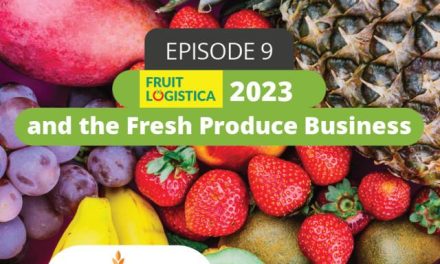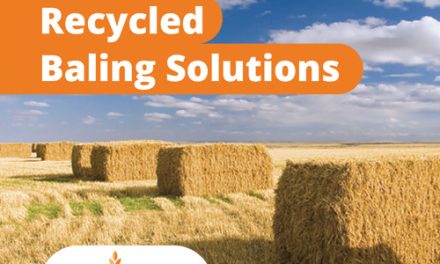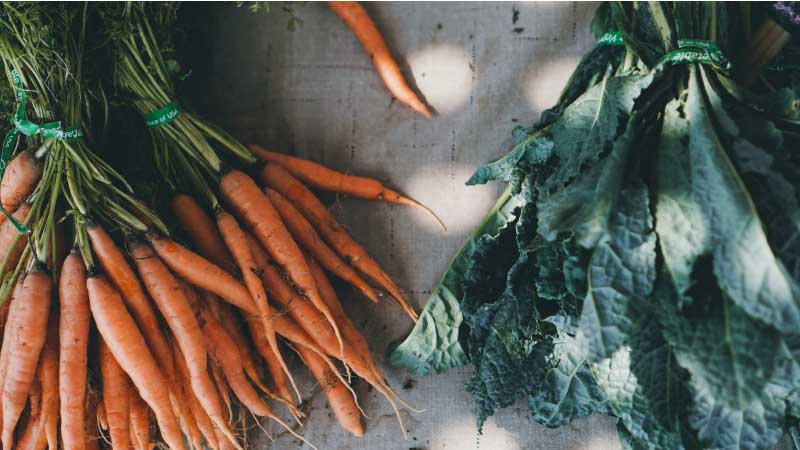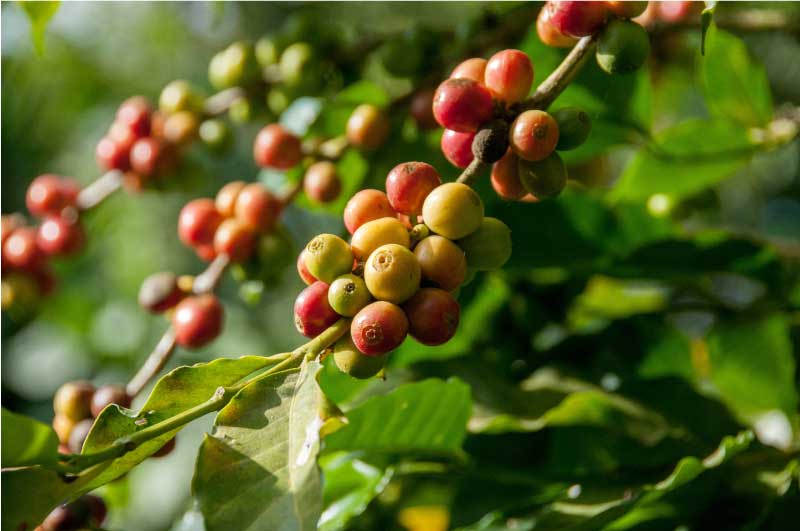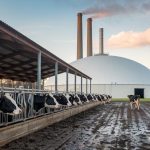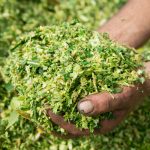
The organic food market
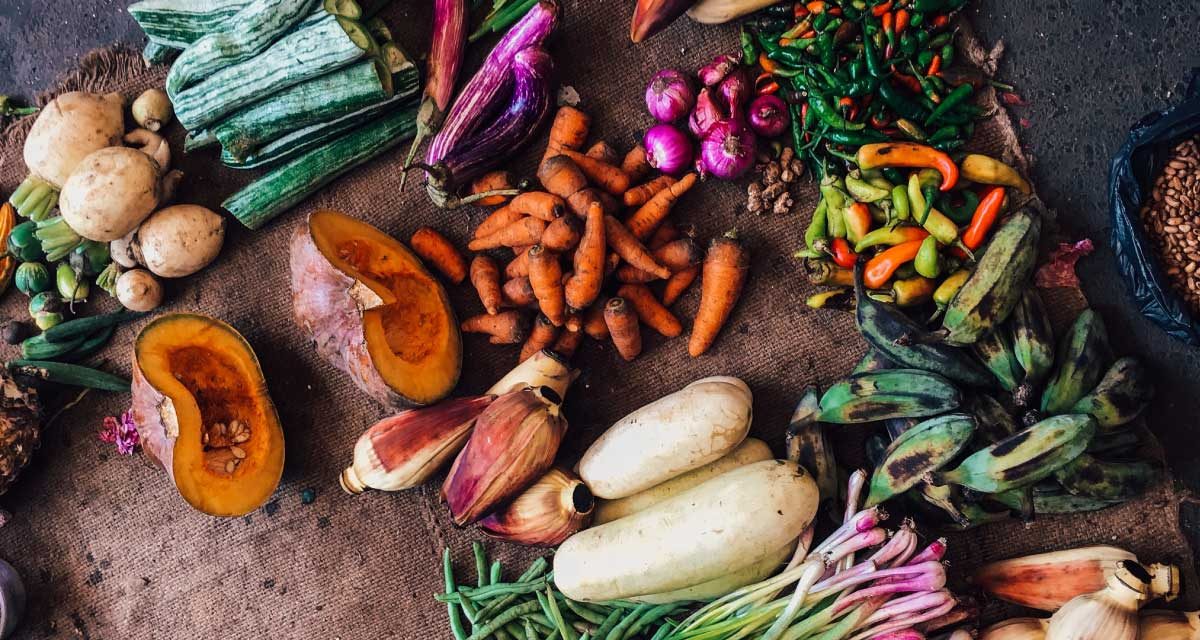

It is no secret that over the last decades, more people have been talking about the organic food market as a result of numerous technological advances and developments that have been taking place in the field of agriculture, where agricultural plastics have also played a role, with the objective to offer a healthier, sustainable, and environmentally friendly approach.
This post intends to provide an overview of the organic food market, developing the following points:
- How the organic food industry is defined
- What organic means in the food industry
- Market realities and challenges
- How has the organic food market grown
- Why organic sales are increasing
- Main competitors
- Is the vegetable industry truly organic?
- The current state of the industry
- The market situation in Latin America
- Use of agricultural plastics
- How is the organic food industry defined?
While many would probably define it as a trend, the truth is that the organic food industry has been formally present worldwide for at least 30 years.
This industry is made up of companies and enterprises dedicated to producing food that is increasingly healthier, where conventional pesticides are not used, and fertilizers are made with synthetic ingredients or human waste compost, avoiding the use of bioengineering, ionizing radiation, or genetic modifications.
From the point of view of the USDA (United States Department of Agriculture), food is certified organic when farmers and producers employ practices intended to comply with established standards. In this sense, the USDA periodically inspects farms before the food can be labeled as organic.
According to information published on the website of the Environmental Protection Agency, the Organic Foods Production Act of 1990 requires the Secretary of Agriculture to establish a National List of Allowed and Prohibited Substances. This list identifies synthetic substances that may be used and non-synthetic substances that may not be used in organic production and handling operations.
What does organic mean in the food industry?
According to the U.S. Department of Agriculture, there are several standards that products must meet to qualify as organic.
In the context of the food industry, organic means the absence of chemical or synthetic insecticides and fertilizers, as well as a return to natural farming practices.
In this sense, products considered to be organic are not only those of plant origin since products of animal origin can also be classified as organic, as long as the animals they come from are not raised with antibiotics or growth hormones.
To be classified as organic, food must be produced without conventional pesticides, synthetic fertilizers, bioengineering, wastewater by-products, or ionizing radiation. A USDA-certified agent, in the case of the United States, must also approve the production of any organic food. Conventional foods, on the other hand, are not subject to these standards.
Organic food has become increasingly relevant due to the growing demand of a group of consumers who are informed and aware of what they eat, where the food comes from, what it contains, and the production processes involved, as well as its effects on health, the environment, and the earth.
According to FAO, “organic agriculture is a process-oriented rather than a product-oriented production system.” These processes imply significant restrictions that raise production and marketing costs but are compensated by subsidies, as is the case, for example, in Europe, and also because they use fewer inputs for cultivation than conventional agriculture.
An important aspect highlighted by FAO is that “as organic agriculture gains market share, economies of scale can significantly reduce these costs.”
We recommend that you read our article on trends in the fresh produce market.
The reality of the organic food industry market
When talking about organic practices in food cultivation, there are several realities and challenges, one of which is that it contributes to combating climate change by retaining carbon in the air and returning it to the soil, where it belongs. In addition to fertilizing the soil, it is possible to maintain humidity and biodiversity.
Thanks to crop diversification, it is possible to provide the soil with different nutrients. This contributes to the health of the soil, preserving biodiversity, and insects and pollinators.
According to the current approach, the organic food market positively influences the empowerment of food sovereignty by ensuring the production of fresh, healthy, and traditional food (without pesticides, herbicides, chemicals, hormones, or dyes), with a high potential to feed more people in the world.
It also seeks to find and establish increasingly direct distribution networks between producers and consumers to avoid an excess of intermediaries, thus promoting a fairer trade where costs can also be reduced.
On the other hand, better ecological management of insects and plant and seed diseases is achieved, thus avoiding severe or irreversible damage to crops.
Challenges in the organic food industry
According to information published on the website Vía Orgánica, one of the main challenges facing the organic food industry is unfair competition. In recent years, some companies with greater economic strength have implemented a strategy of acquiring small organic food companies to enter the market without a real ecological commitment.
Another challenge is the high cost of organic products, which tend to be more expensive because they take longer to produce, require more work, and are processed and distributed on a smaller scale through more costly and often bureaucratic certification processes. Hence the need for many organic producers to promote alternatives and public policies that allow for simpler processes for the benefit of all.
From a retail point of view, organic products usually receive a higher price premium than non-organic products. Studies by the USDA’s ERS (Economic Research Service) have analyzed organic retail price premiums for several decades where they find that these “premiums have been fluctuating from year to year with no clear trend, except for foods such as spinach, canned beans, and coffee, which showed a steady decline in premium, and yogurt, which has shown a steady increase. Sales of organic products with lower premiums (such as spinach, granola, and carrots) experienced larger market share gains.” More details on this study can be found here.
On the other hand, in the case of Latin American countries such as Mexico, the percentage of female participation is very low (between 18% and 35%), which does not reflect the true participation and contribution of women to the rural economy, even though they are involved in all stages of the process. This certainly still has plenty of room for improvement.
According to the website The Food Tech, another major challenge is the digital transformation of the organic food market, as today the digitization of the food sector in general is focusing on improving food safety and quality along the entire supply chain (use of tracking and traceability systems, sensors, data analysis, and mobile applications, among others).
The use of these technologies can help to enhance efficiency and sustainability in organic food production, optimizing the use of resources and reducing waste.
We recommend reading our article on the action plan for organic agricultural production in the European Union.
How has the organic food market grown in the United States?
According to information published on the website Growing Produce, by 2022 organic food sales in the United States would exceed $60 billion for the first time.
In this regard, total organic sales, where non-food organic products are included, managed to reach a record $67.6 billion, according to the 2023 Organic Industry Survey released by the Organic Trade Association.
This growth has been achieved even though the organic food market had to overcome several challenging situations, among which the following stand out:
- Inflation
- Supply chain disruptions as a result of the pandemic
- Labor shortages
- The emergence of competing food labels seeking to divert attention away from organically produced foods
- Several political and social developments, including the war in Ukraine
According to Tom Chapman, executive director of the Organic Trade Association, the organic food market has proven to be very resilient in the face of economic variations in the short term. “Despite the fluctuation that may have occurred, U.S. consumers continue to invest in their health and, with a growing interest, in the environment; organic is the answer for people, the planet, and the economy.”
Inflation not only increased costs throughout the organic supply chain but through the food supply chain as a whole, which also increased prices in the supermarket aisles. As a result of this scenario, organic sales increased, even as the sales volume in other categories declined.
Considering the numbers in the United States, and according to the Nutrition Business Journal cited in this USDA article, “sales of fresh fruits and vegetables have been the top category of organically grown food since the organic food industry started retailing products. Retail sales of organic fresh fruits and vegetables were an estimated $19.2 billion in 2021 and have steadily trended upward for the past two decades” in the United States.
“The 4% growth in the sector’s sales value was nearly double the pace of growth in 2021…Organic certification now accounts for 6% of total U.S. food sales,” according to the OTA.
Organic beverages were the second best-selling organic category in the United States. By 2022, $9 billion in sales were reported, which translates to an additional 4%. “Organic coffee maintained its position as the top-selling organic beverage, up nearly 7% from the previous year, with nearly $2.3 billion in sales. Organic soft drinks and enhanced beverages surpassed $500 million in sales with $503 million, reporting a solid growth of nearly 14%.”
According to the Organic Trade Association, another organic product category that was quite successful was dairy and eggs with $7.9 billion, up 7% compared to the previous year. Both products now make up about 8% of the total dairy and egg market. In this regard, steady demand and inflationary price increases helped drive sales in that category.
“Both yogurt and eggs saw double-digit growth, with organic yogurt sales up more than 12% to $1.5 billion, and organic egg sales up 11% to about $1.2 billion.”
According to the analysis, organic sales in the United States over the last decade have far exceeded expectations as has been evidenced in the preferences of U.S. consumers who are eating and using more organic products than ever before.
It is worth mentioning that during the first months of 2023, a new survey was conducted on behalf of the Organic Trade Association by Nutrition Business Journal, where several sources of data were gathered to generate a more complete picture of the organic industry, which is largely made up of private companies. For more information about it, click here.
Why are organic sales increasing?
According to data reported on Business News Daily, in 2021 an empirical study was conducted to analyze what motivated consumers to buy more organic food. This study indicates that the growth has to do with the fact that consumers are increasingly conscious of their health, so many think that organic foods allow them to have a healthier diet than conventional foods.
“Consumers have also become more concerned with the environmental effects of food production processes. Chemical fertilizers and synthetic substances can be harmful to the environment and, in turn, to consumers’ health. As a result, many consumers are more willing to purchase environmentally sustainable and organic products.”
In addition, this publication by Business News Daily highlights that more companies are leaning towards becoming greener, for example, by creating marketing strategies that seek to promote a more natural and organic culture.
Main competitors in the organic food industry
According to El Economista in Argentina, a survey published by the Research Institute of Organic Agriculture (FiBL), the area dedicated to organic crops has grown significantly worldwide.
The top 3 regions worldwide with organic crops would be the following, in order of priority:
- Oceania with half of the world’s organic crop area (36 million hectares or almost 89 million acres) with a high concentration in Australia
- Europe with 16.5 million hectares or almost 41 million acres
- Latin America with 8.3 million hectares or 20.5 million acres
According to the USDA and data from National Agricultural Statistics Service surveys (2011 and 2021): Certified organic acreage increased by 79% (to 3.6 million acres or 8.9 million hectares) in the United States.
The cultivation of organic products increased in all the geographical areas indicated, except for Asia, where a retraction was reported in China.
“Several major markets continued to show strong growth rates during 2019. Thus, for example, Danish and Swiss’s consumers increased their spending on organic food ($290 and $285 per capita per year, respectively), being able to highlight that Denmark reported the highest market share of consumption of organic products, which concentrated 12.1% of its total food market.”
According to El Economista in Argentina, “the expansion of the area devoted to organic crops responds to a significant expansion of global demand for food in this category in a wide range of markets, among which the U.S. stands out, followed by Germany, and France, registering significant growth rates that exceeded 13% per year in the latter case.
For data related to the value of the organic food industry click here.
Is the vegetable industry truly organic?
According to the information published on the website Growing Produce, in the case of those who have organic crops, a survey is carried out every year to know or follow the development of operations in the cultivation of vegetables.
Among the aspects contemplated in the survey are planning, cultivation methods, and levels of dedication, among others. When consulting organic farmers about how much of their agricultural land is dedicated to organic production, the results obtained were the following:
- Less than 10% (18%)
- 10% a 25% (7%)
- 25% a 50% (8%)
- 50% a 99% (22%)
- 100% (45%)
The survey shows that 30% of vegetable growers produce organic crops, while another 8% plan to do so within three years.
Meanwhile, 43% of organic vegetable growers plan to expand organic acreage within the next year.
The survey also asked about their motivations for growing organically and the results were as follows:
- Sustainability is a high priority (73%)
- It is the best production method (58%)
- It is an alternative to meet market demand (57%)
- It is an option to diversify within the market (42%)
- Due to organic crop prices (41%)
For more information, we recommend reading the following articles:
Eating Plant-Based, Organic and Local: Is It Most Sustainable Way to Go?
Are organic foods healthier than conventional foods?
What is the current state of the organic food industry?
According to information on the website Growing Produce, a wide variety of crops are now being grown, and production is increasing as demand for organic products rises.
The farmers consulted point out that since the pandemic they have experienced unprecedented growth from a restaurant-centric distribution model to a model of home deliveries and on-farm retail stores, and thus have diversified operations to benefit customers, suppliers, and the communities at large. For more information about it, click here.
It is worth mentioning that although organic food consumption has increased considerably, it is still difficult to identify the typical organic food consumer, as these types of consumers come from all types of consumer demographics. For their part, organic price premiums remain high in many markets as demand for organic products increases.
According to the Organic Trade Association, “88% of organic sales occur through conventional and natural food supermarkets and chains. The remainder of the sales occurs through farmers’ markets, Community Supported Agriculture (CSAs), other direct-to-consumer sales, and internet sales. The share of organic food sold to consumers via the Internet has grown from 2% in 2012 to 6% in 2020 (Organic Trade Association, 2021). For more information about it, click here.
To learn about the sales trends among organic food categories, click here.
What is the situation of the organic food market in Latin America?
According to Mintel’s GNPD (Global New Products Database) cited in this publication by The Food Tech, Latin America would see a four-fold increase in the number of organic product launches by 2021, compared to 2011.
Based on data from Euromonitor International, also cited in The Food Tech, some of the Latin American markets for organic products that achieved excellent figures in 2021 were the following:
- Brazil – US $81 million
- Mexico – US $63 million
- Chile – US $24.5 million
- Argentina – US $15.9 million
- Peru – US $400,000
This Euromonitor International study indicates that there is a high probability that most of these markets will continue to grow during the 2021-2026 period, mainly in Argentina.
Mexico is the third country in the world with the highest number of certified organic producers. The most widely produced organic foods are coffee, avocado, safflower, mango, chia, blackberry, orange, chickpea, tomato, and corn.
Chiapas, Baja California, and Oaxaca are the states with the highest production of organic food in said country.
More than 164 thousand hectares of crops are certified under the Organic Products Law. More than 38 thousand producers have been certified in compliance with the Organic Products Law and of these, 86% are small producers with an area of up to 5 hectares or 12 acres, according to data published on the Mexican Government’s website.
According to information provided by FiBL (Research Institute of Organic Agriculture) and IFOAM (International Federation of Organic Agriculture Movements), some Latin American countries are proposing amendments to their organic regulations, as currently, about twenty countries have such regulations, but they are not fully implemented.
There are also international agreements between certifications in different countries, which provide greater flexibility and transparency, thus facilitating the exchange of products.
The organic food market and the use of agricultural plastics
Since methyl bromide began to be eliminated as a soil disinfectant, several bacteria have become a problem in greenhouses in various regions of the world.
These restrictions on the use of substances for soil fumigation and the growing demand for organic products have led researchers to look for other alternatives to manage pests such as M. incognita agalladora, for example, especially when it comes to organic crops.
In this sense, several studies and tests carried out on crops whose soils were naturally infested by some bacterial populations, showed that, through the use of plant grafts, plastic films, and procedures such as biosolarization where fresh sheep manure was used as an organic modification, for example, these soils recovered, thus considerably reducing the severity and incidence of nematode disease.
“Crop rotation with Brassica non-host cover crops for biofumigation or biosolarization, and biosolarization with different modifications (animal manure, urban waste or residues, agricultural by-products, green manures, etc.) have been studied in recent years as alternatives to chemical soil disinfection” (Basallote-Ureba et al., 2016; Melero-Vara et al., 2012; Oka, 2010; Ros et al., 2016; Rudolph et al., 2015).
“In attempts to control Phytophthora on greenhouse bell pepper crops in Murcia, biosolarization methods have proven highly effective and long-lasting” (Lacasa et al., 2015). For more information about it, click here.
We also invite you to read our post about the different methods used to treat agricultural soils and the plastics you can use for each of them.
For more information, we recommend our series of webinars and podcasts that we have prepared for you.
References:
Organic Farming – Environmental Protection Agency (EPA)
Organic Agriculture – U.S. DEPARTMENT OF AGRICULTURE
Combination of biosolarization and grafting to control Meloidogyne incognita in greenhouse pepper crops – Daneshyari
Eating Plant-Based, Organic and Local: Is It Most Sustainable Way to Go? – OpenMind BBVA
Organic Market Overview – Organic Trade Association
Organic Food Sales Growth Outpaces Rest of Grocery Industry – Business News Daily
The future of organic food in the world [El futuro de los alimentos orgánicos en el mundo] – El Economista
These are the challenges the agri-food industry faces [Estos son los retos que enfrenta la industria agroalimentaria] – The Food Tech
Market research on the market for organic products– Into The Minds
The organic trend in 2021 [La tendencia orgánica en 2021] – Towords
Organic Food Sales Grow Past $60 Billion Mark in 2022 – Growing Produce
Growers Offer Firsthand Perspective on the Current State of the Vegetable Industry – Growing Produce
Global Organic Market: unprecedented growth in 2020- Organización Internacional Agropecuaria
Organic products, a market that demands color and transparency [Productos orgánicos, un mercado que demanda color y transparencia]- The Food Tech
Organic products, naturally important [Productos orgánicos, naturalmente importantes] – Mexico’s Government
How Organic Is the Vegetable Industry? Survey Results Tell the Tale – Growing Produce
Global organic market: Unprecedented growth in 2020 – Organic retail sales grew by 14 billion euros and exceeded the 120-billion-euro mark – FiBL
Realities and challenges of organic food [Realidades y retos de la alimentación orgánica] – Vía Orgánica
Are organic foods healthier than conventional foods? [¿Son más saludables los alimentos ecológicos que los convencionales?] – Universitat Pompeu Fabra UPF – Nutrimedia









![[eBook Trends in Agriculture Plastics] Increasing use of biodegradable mulch](https://agriplasticscommunity.com/wp-content/uploads/550 × 310_2_ENG-440x264.png)
![[eBook Trends in Agriculture Plastics] Reducing the plastic used in the manufacture of agricultural films](https://agriplasticscommunity.com/wp-content/uploads/550 × 310_1_ENG-440x264.png)






